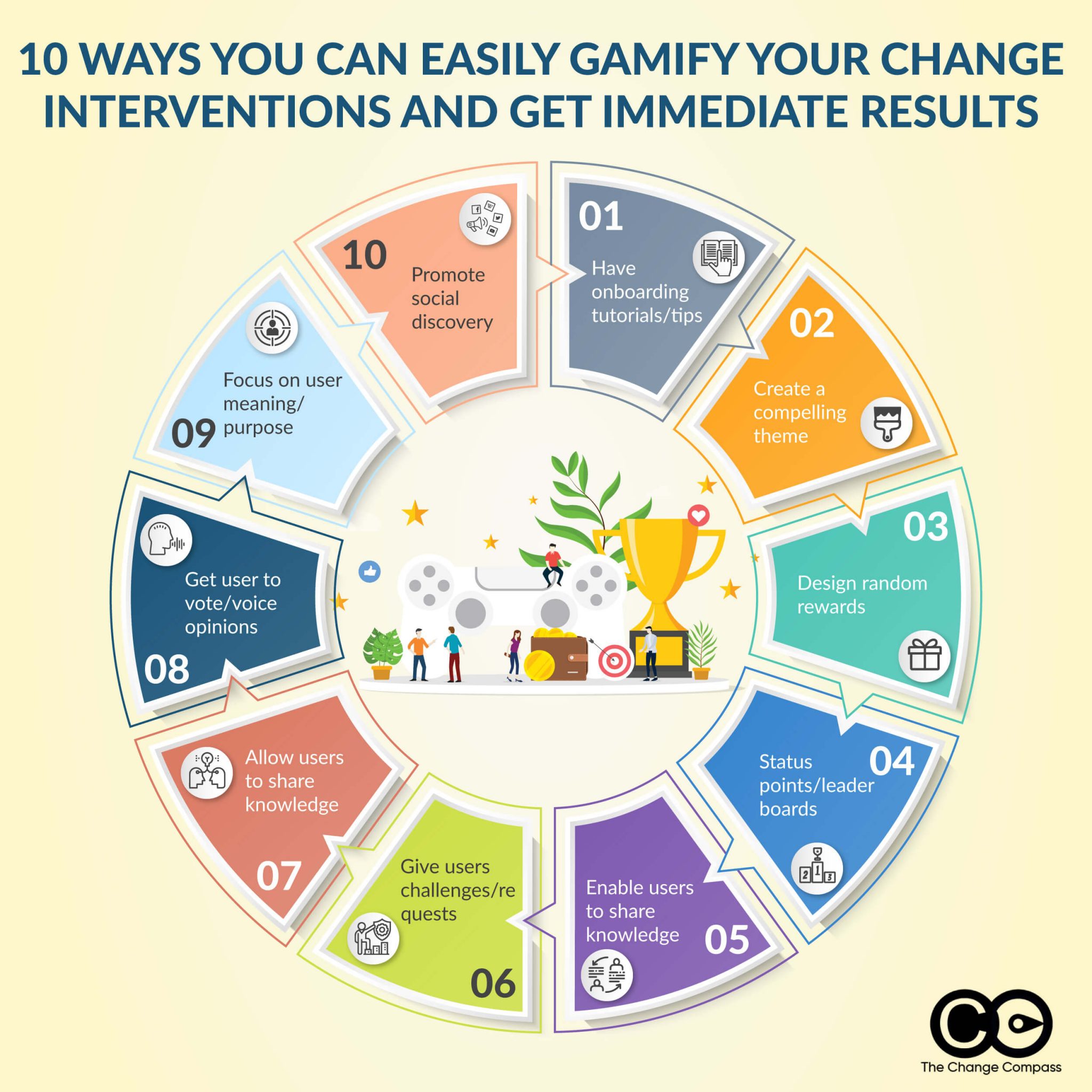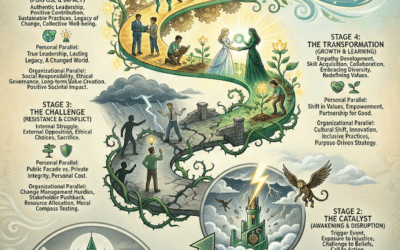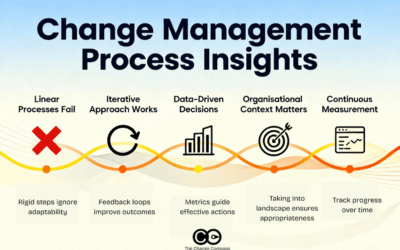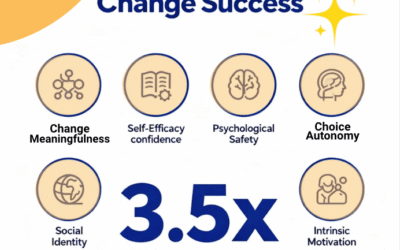Gamification for Change Management: Transforming Engagement and Outcomes
Change is a constant in today’s organizations, but ensuring that employees embrace and sustain new ways of working remains a persistent challenge. Traditional change management methods—relying on training, briefings, and compliance checklists—often fail to inspire lasting behavioral change, especially in a post-pandemic world where remote and hybrid work have become the norm. Enter gamification: a powerful, modern approach to driving engagement and adoption during organizational transformation.
What Is Gamification in Change Management?
Gamification is the application of game-like elements – such as points, badges, leaderboards, and rewards—to non-game contexts, particularly to motivate and engage employees during change initiatives (where an AI image may be used). It leverages the psychological principles that make games enjoyable: competition, achievement, recognition, and a sense of progress.
“Gamification is using game-based mechanics, aesthetics and game-thinking to engage people, motivate action, promote learning and solve problems.”
Why Gamification Works for Change Management
Traditional change management is often transactional, focusing on completing tasks and meeting deadlines. While this approach ensures compliance, it rarely addresses the deeper need for emotional and cognitive engagement required for sustainable change. Gamification transforms the change experience from a passive, mandated process into an active, interactive, and rewarding journey.
Key benefits include:
- Increased Engagement: Gamification makes learning and change activities more enjoyable, leading to higher participation rates through the use of an app.
- Better Retention: Interactive and competitive elements help employees retain new information and behaviors longer than traditional training methods.
- Team Collaboration: Multiplayer or team-based challenges foster collaboration and reinforce shared goals.
- Scalability: Digital gamification tools can be deployed across large, diverse workforces, ensuring consistent experiences for all employees.
- Actionable Insights: Real-time feedback and analytics allow organizations to track progress and adjust strategies as needed.
Practical Examples of Gamification in Change Management
- Leaderboards and Badges: Call center agents receive real-time feedback on their performance, earning badges and climbing leaderboards as they adopt new skills and meet KPIs. This friendly competition drives motivation and continuous improvement.
- Interactive Serious Games: Companies like Maison du Monde have developed immersive AI video games where employees navigate virtual environments, answer questions, and earn rewards by engaging with the company’s strategic objectives. This approach has proven effective for aligning large, geographically dispersed teams.
- Behavioral Rewards Programs: Discovery Insure’s Vitality Drive program rewards drivers for safe behavior, using gamification to encourage positive habits and reduce risk. Similar mechanics can be applied within organizations to promote desired behaviors, such as safety compliance or process adherence.
Proven Gamification Tactics for Change Delivery
You don’t need to be a gamification expert or invest in expensive software to make a difference. Here are some quick, practical ways to gamify your change initiatives:
- Onboarding Tutorials with Interactive Walkthroughs: Replace static training with engaging, context-specific tutorials that guide users through new systems or processes.
- Points and Badges for Milestones: Reward employees with points or badges for completing training modules, adopting new behaviors, or contributing ideas.
- Leaderboards to Foster Healthy Competition: Display performance rankings to motivate individuals and teams to excel.
- Challenges and Quests: Design short-term challenges or quests that encourage employees to explore new tools or processes.
- Rewards and Recognition: Offer tangible or intangible rewards for top performers, such as certificates, shout-outs, or small prizes.
- Feedback Loops: Provide instant feedback on actions, helping employees see the impact of their behavior in real time.
- Collaborative Multiplayer Games: Create team-based challenges that require cooperation to achieve shared goals.
- Personalized Progress Tracking: Allow employees to track their own progress and set personal goals.
- Fun and Creative Messaging: Use playful language, graphics, and notifications to make the experience more enjoyable.
- Analytics for Continuous Improvement: Use data from gamified activities to identify trends, gaps, and opportunities for further engagement.
The Science Behind Gamification
Gamification taps into fundamental human motivators, such as the desire for achievement, recognition, and belonging. By aligning incentives with these motivators—and referencing frameworks like Maslow’s Hierarchy of Needs—organizations can drive quicker and more sustainable adoption of change initiatives. Gamification also leverages principles of operant conditioning, reinforcing desired behaviors through rewards and positive feedback.
Moving Beyond Transactional Change
To truly embed change, organizations must move beyond transactional approaches and create experiences that inspire and engage employees at every level. Gamification provides a bridge between the need for compliance and the desire for meaning and enjoyment in the workplace.
“By integrating gamification into your change management strategy, you can transform passive compliance into active participation.”
Conclusion
Gamification is not just a trend—it’s a proven strategy for making change management more effective, enjoyable, and sustainable. Whether you’re rolling out a new system, driving cultural transformation, or aligning teams around strategic goals, gamification can help you engage employees, reinforce desired behaviors, and achieve lasting results—without the need for expensive software or extensive expertise.
Ready to take your change delivery to the next level? Start small, experiment with different tactics, and watch as your workforce becomes more engaged, motivated, and aligned with your organization’s vision.






